How Are Cat Coat Colors Formed by Gene?
Cats come in a variety of colors and patterns. Have you ever wondered how the colors and patterns are formed by gene mechanisms?
On the whole, it's the complex and ever-changing environment that cats inhabit, leading to the evolution of numerous protective colors through natural selection, enabling them to effectively camouflage themselves for hunting. This article will explain how cat coat colors are formed based on the base colors, tabby patterns, and distribution of white markings.
1. Basic Coat Colors of Cats (Base Colors)
The basic colors of cats are only black, red (commonly known as orange), and white. The tricolor is the maximum number of colors a cat can show.
Black-based colors are expressed through eumelanin, including black, chocolate, and cinnamon, as well as their corresponding dilute colors such as blue, lilac, and fawn. A total of six variations.
Red-based colors are expressed through phaeomelanin and include red (orange) and its corresponding cream color. A total of two variations.
Solid white is caused by a lack of pigment.
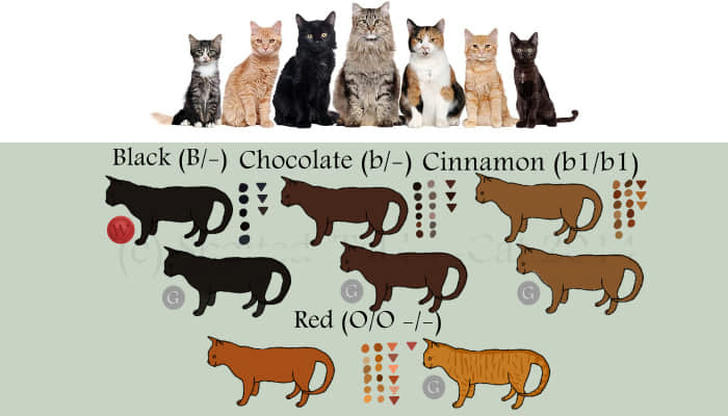
Why are two-colored and three-colored domestic cats always female?
Like many mammals, male and female cats have different sex chromosomes, with males having XY and females having XX. Both the black factor and the red (ginger) factor are found on the X chromosome, so a cat has to have two X chromosomes to be bicolor or tricolor.
2. Tabby Patterns in Cats
In solid-colored cats, each hair follicle produces a single color, resulting in an overall single-color appearance (referred to as solid or self color). Compared to solid colors, tabby cats are better able to camouflage themselves in nature. The pigment distribution in the individual hair shafts of tabby cats results in a banded appearance, known as agouti fur.
The distribution of agouti fur can vary widely. When the tip is darker than the base, there are three main variations.
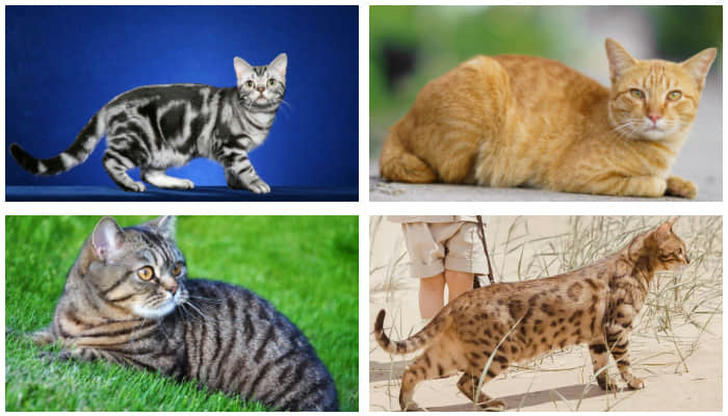
The formation of tabby patterns is controlled by the agouti gene, which is dominant. It causes the base of each hair shaft in the cat to appear lighter, while the tip appears darker.
Tabby fur is organized into four typical patterns:
Mackerel Tabby: characterized by narrow, vertical stripes on the body and rings around the tail and legs. Such as Dargon Li.
Classic Tabby: characterized by bold, swirling patterns on the sides and a distinctive "butterfly" pattern on the back.
Spotted Tabby: characterized by spots instead of stripes, similar to those seen in wild cats like the leopard or ocelot.
Ticked Tabby: where the spots are smaller and denser. The controlling genes are different from the above three, but are still classified in the Tabby.
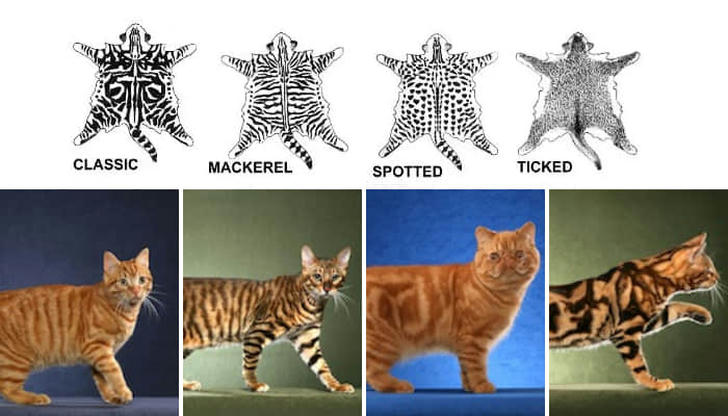
The colors in the above image are represented in black and white to indicate shading, but in reality, the colors of tabby patterns can be either in the black or red color.
Characteristics of tabby cats include:
An "M" pattern on the forehead. "Pencil lines" on the face. Black "eyeliner" with a ring of white or lighter-colored fur outside the eyeliner. Pigmented lips and paws. Pink nose with a darker outer rim. Stripes on the torso, legs, and tail (not visible in ticked tabby cats).
The base color of tabby patterns can also undergo "silver" and "golden" variations:
Silvering replaces the light-colored areas of tabby fur with white, giving the fur a silver-gray appearance.
Goldening replaces the light-colored areas of tabby fur with yellow, resulting in a golden-yellow base color.
"Silvering" and "goldening" also apply to fur with three main variations of agouti fur, such as a silver shaded or golden shaded cat.
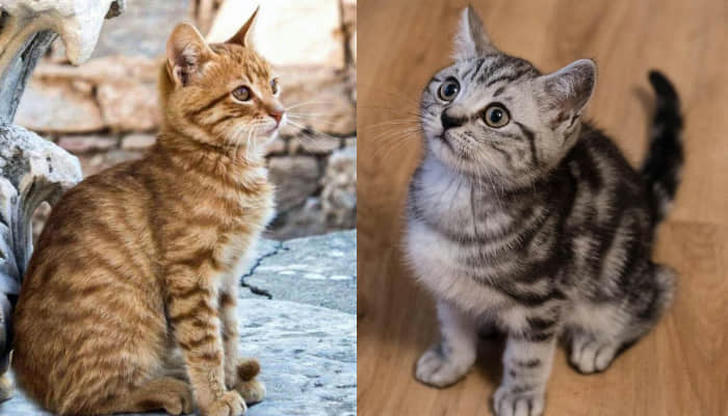
3. White Hair in Cats
White fur in cats currently has three types:
Dominant White: Acts on the entire body, resulting in a pure white cat.
Albino: Acts on the entire body, born completely white, gradually develops color with temperature changes.
White Spotting: Partial white, varying degrees of white added to the coat.
Due to the degree of white spotting, cats have unique facial markings, commonly referred to as van markings, cap, eye-patch, spot, mustache, mask, blaze, nose-snip, white chin, and white cheeks.
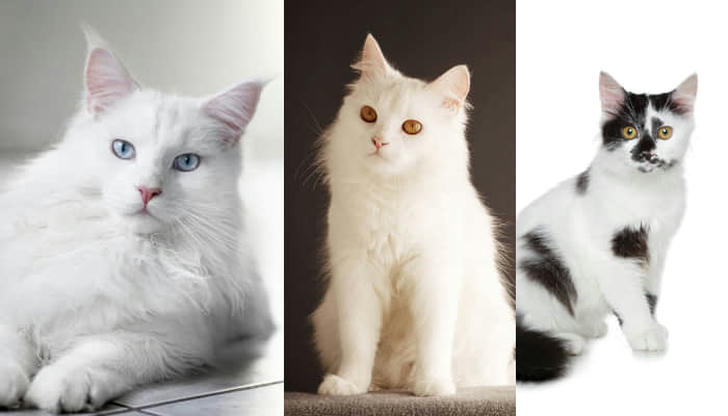
Why do cats always have white limbs and colored backs?
This may be due to the different development of pigment cells in cats during the embryonic period, and there are currently three theories.
Theory One
Melanoblasts derived from neural crest migrate on the skin during its formation. If melanoblasts do not migrate to the remaining part of the skin before its complete formation, the remaining skin lacks pigment cells and appears white. This is why areas furthest from the neural crest, such as paws, belly, and front chest, first appear white.
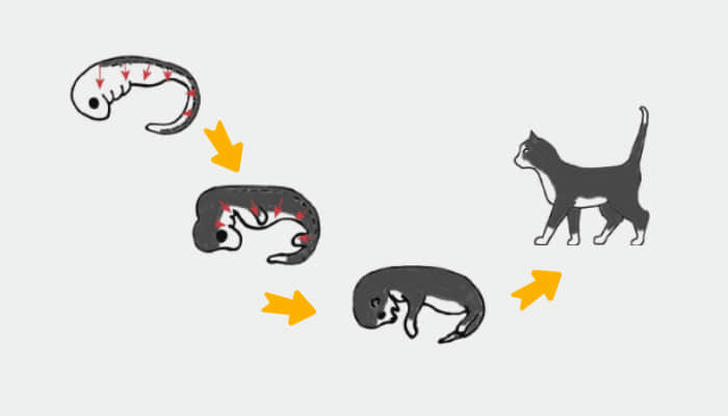
Theory Two
There is a cellular mechanism that can reduce melanoblasts in specific areas. Initially, melanoblasts cover the entire embryo, then melanoblasts in the limbs selectively undergo apoptosis or shut down the biochemical function of pigment production. These cells spread to the trunk area, and the spread range depends on the "concentration", with the limbs having the highest concentration, which decreases with distance. The formation of a white chest occurs because the embryo's ventral seams develop faster.
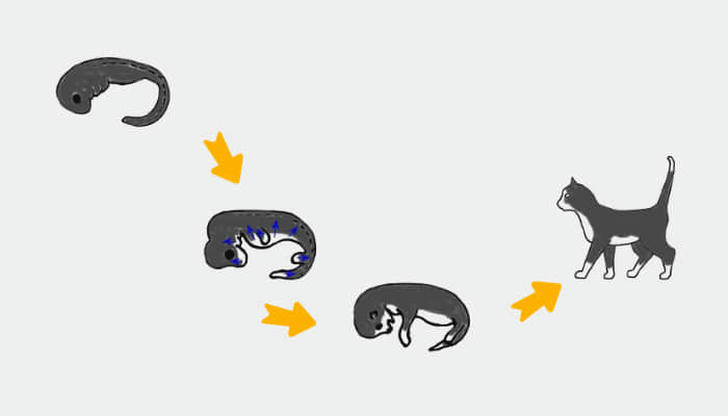
Theory Three
Melanoblasts are initially evenly distributed, then during early embryo development, the expanding surface skin divides the pigmented skin into independent small patches. These independent small patches change position as the embryo continues to develop. The white areas between the independent patches will never be filled with pigment cells (similar to the movement of Earth's tectonic plates). The formation of a white chest occurs because the embryo's ventral seams develop faster (or because the movement speed of pigment cells is limited). The black on the legs is due to the belly pushing the black patches onto the limbs during development.
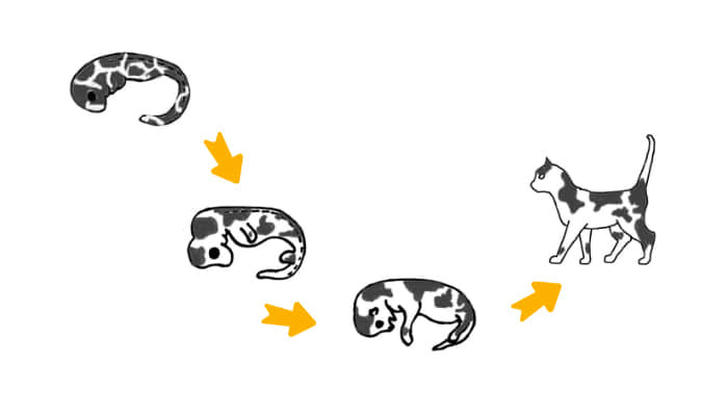
In summary, besides the basic colors, cats also have tabby and white spotting mechanisms, ultimately resulting in a variety of cat coat colors, which are classified into different breeds.
